
Generations of Us: An Intergenerational Storytelling Project on Chicago’s South Side
Chicago, Illinois
May 21, 2014
My name is Kelli Bosak, and I am a graduate student at the University of Chicago’s School of Social Service Administration (SSA). Prior to coming to SSA, I completed a two-year term of AmeriCorps service in Philadelphia, Pennsylvania where I coordinated a staff of college student volunteers as well as the daily operations of a community resource center providing direct social services to low-income individuals. I also hold a B.A. in French and anthropology from the University of Michigan. This year, I have been involved with the International House at the University of Chicago in my role as a Community Fellow. Having grown up in the suburbs of Chicago, I am excited to live, work, and learn from the communities on the south side of Chicago.
The project that I will be working to implement this summer is called, Generations of Us: An Intergenerational Storytelling Project on Chicago’s South Side. The project’s aim is to connect young adults living on Chicago’s South Side with older adults to share their personal experiences through oral history interviews. I have partnered with the South Side Help Center and the Atlas Senior Center to recruit young and older adults to voluntarily participate in this project. By working collaboratively with the two partner organizations, the young and older adults will participate in an interactive workshop focusing on the power of storytelling to promote intergenerational reconciliation and learning between those living in communities impacted by poverty, violence, and the criminal justice system.
July 7, 2014
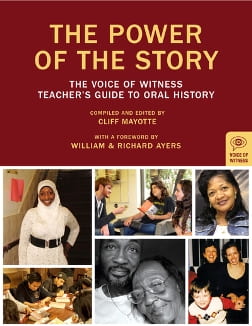
Summer officially began for me the second week of June. During the first half of summer I will be working on community health projects with high school students on Chicago’s South Side through the Summer Service Partnership (summerservicepartnership.com). During the spring quarter and the beginning of the summer, I have been working on planning and recruiting for the Generations of Us project. The South Side Help Center will be recruiting students from its youth summer programs, and I spent several Tuesdays at the Atlas Senior Center tabling and meeting with older adults. My goal is to have 25 youth and 25 older adult participants, and I have almost reached that goal! As a part of the recruitment, I also developed a flyer to advertise and promote the program. Check out the flyer!
In May, I also had the opportunity to attend an Oral History workshop at the University of Chicago’s Logan Center led by Voices of Witness (www.voicesofwitness.org). Through this interactive workshop, I had the chance to practice conducting oral histories as well as leading and teaching workshops on how to interview and record people’s histories. I left the workshop with many ideas for the Generations of Us curriculum, as well as with two handy books: High Rise Stories and The Power of the Story. Both of the books are published by Voices of Witness. High Rise Stories includes stories from those who lived in Chicago Public Housing, and The Power of the Story is a teacher’s guide for oral history. I am learning a lot about different
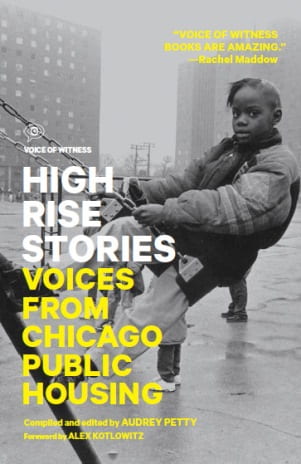
ways to introduce and incorporate oral history into interactive projects. They have also been helpful recruitment tools and great conversation starters with older adults at the Atlas Center!
Since I am still gearing up for the Generations of Us workshops to actually start on August 11, I wanted to give you some information about the organizations that I am partnering with this summer: the Atlas Senior Center and the South Side Help Center.
The Southeast (Atlas) Senior Center is located at 1767 E. 79th St. in Chicago, IL. Established by the Department of Family and Support Services in 1980, the Southeast Atlas Regional Center is run by the City of Chicago and geographically located to
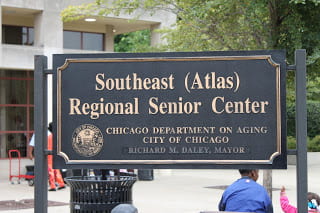
serve the following Chicago wards; 2nd, 3rd, 4th, 5th, 6th, 7th, 8th, 9th, 10th, 11th, 17th, 20th, 21st, 22nd, 25th, 33rd and 34th wards. The center offers ongoing and special programs for seniors over the age of 65, including art, golden diners (meals) programs, fitness, continuing education, music, dance, social support, and much more! Robin Tillotson is the regional director and my main contact at the Atlas Senior Center. (http://www.79thstreetseniors.com/)
The South Side Help Center (SSHC) is located at 10420 S. Halsted in Chicago, IL. The SSHC’s mission is to “provide people
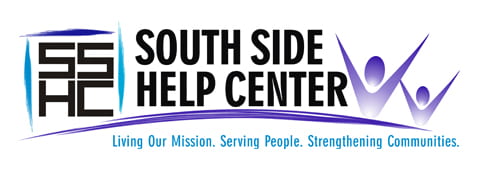
with positive and healthy alternatives” through a variety of programs and services. Founded in June 1987, SSHC’s purpose is to help people of all ages embrace a lifestyle of prevention against mental, physical and social ills by providing positive, healthy alternatives so that community residents can lead productive lives. The SSHC Youth Programs are a comprehensive collection of programs that help youth & teens to achieve success, inherit positive self-esteem, distinguish values. Marcus Flenaugh is the Youth Development Director and my primary contact at SSHC. (www.southsidehelp.org)
I look forward to providing more updates about the project as it gets closer to the launch date, August 11!
Monday, August 11 & Tuesday, August 12
After months of planning and anticipation, Generations of Us officially began on Monday, August 11! Walking into the South Side Help Center, located at 104th and Halsted in the Roseland community, I could feel the energy of young adults. I approached planning the curriculum by focusing on the 6-step process of conducting an oral history interview: plan, prepare, exchange, preserve, present, and reflect. This process is the foundation upon which each day’s agenda is built. This week, we will be focusing on planning and preparing, with the exchange, preserving, presenting, and reflecting stages happening next week. The thought is that by devoting time, energy, and resources to planning and preparing, we all will have built the relationships and built the skills to record an interview. In this post, I will reflect on the first two days of the project: Monday and Tuesday. In total, Generations of Us will take place over the course of two weeks!
Monday’s agenda:
1. Introduction and Icebreaker
2. Set group expectations
3. Introduction to Oral History
4. Communication Brainstorm
5. Aging Simulation
6. Closing: prepare for travel to the Atlas Senior Center
On Monday, I spent the afternoon at the South Side Help Center to focus on meeting and engaging with the young adult participants, or our Interviewers. I learned names and, as a fan of icebreaker questions, also what superpowers each young adult would have if they could choose any one. Their chosen superpowers ranged from telekinesis to omnipotence to flying to a combination of them all. I was immediately impressed and amused by the energy of the youth as well as by our immediate focus on assets, strengths, and supporting each other through sharing.
I also learned that two of the youth already had experiences with Oral History, mostly through high school classes. In addition, most students are from the Roseland community and almost all currently live on the South Side of Chicago. After getting to know each other a little bit, I led a brief lesson to introduce oral history.
Each Interviewer-in-training received the guide that I created, and we asked and answered the fundamental questions of “what is oral history?” and “you mean oral history is not just reminiscing about the past?” We emphasized that oral history is a structured and formal interview process to record and preserve personal stories and experiences that historians may use in the future. We reviewed the goal of this oral history project to promote intergenerational peace and dialogue by training young adults to record the histories of older adults in their community. Then, each young adult wrote personal goals that they would like to work on during the course of the project.
To wrap up our discussion of oral history, I posed a question to the group. I asked, “If you had a personal story to share with someone, what would you need from that person to feel brave?”
Even though we want to create a safe space for our narrators to tell their story, I choose to ask students how we could create a brave space. For me, the brave space is safe, empowering, and supportive. The youth chose to respond to my questions with incredible insight and intelligence. Here are some responses:
“Be prepared to conduct the interview and to hear what the person has to say.” “Be a good listener.” “Be respectful.” “Be calm and comfortable.” “Have good body language.” “Be able to make the person trust you.” “Get to know the person.” And “show that you are interested!”
To wrap up the first day, we learned about some of the challenges facing older adults as they age. To do that, we discussed the natural aging process and participated in an aging simulation. The young adults visited five stations to learn about neuropathy, hearing loss, vision loss, language impairments, and impairments in mobility and balance. The room was lively and active, and here are some pictures to demonstrate the concentration and engagement of students in the simulation.
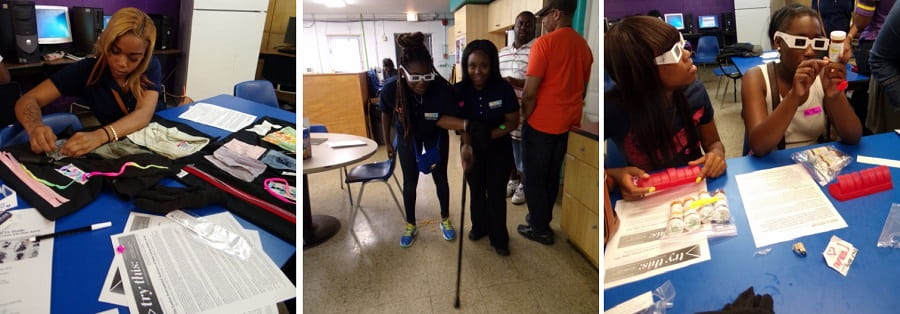
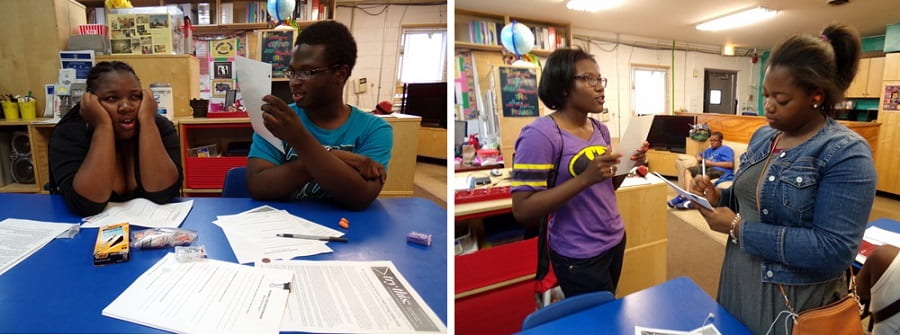
For our final closing and to preview our agenda on the second day, we discussed the aging simulation. We thought about how the aging process may affect older adults and more specifically, the oral history interview process. Many great ideas swirled, and I felt that we all left the room that day with a sense of anticipation to travel to the Atlas Senior Center and meet the older adults the following afternoon.
Tuesday’s agenda:
Welcome young and older adult participants/Brief Introduction of Project
Icebreaker/Energizer: handshakes from around the world
Purpose and Tour of the Atlas Senior Center
Re-introduction of the Project and expectations
Past and Present Brainstorming Activity
Question Game
At 2pm, our group finally came together, bringing the young adult interviewers via school bus from the South Side Help Center to join the older adult narrators at the Atlas Senior Center. Remaining in the phases of planning and preparing, we focused on getting to know each other, building trust, setting expectations, and creating dialogue between the generations present in the room. With a room filled with 25 young and older adults, we began by meeting different people and doing the “handshakes from around the world” energizing icebreaker.
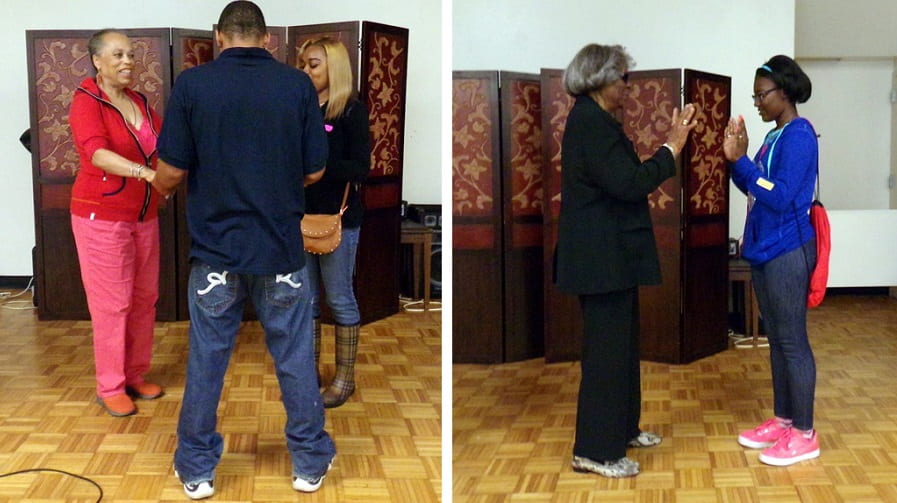
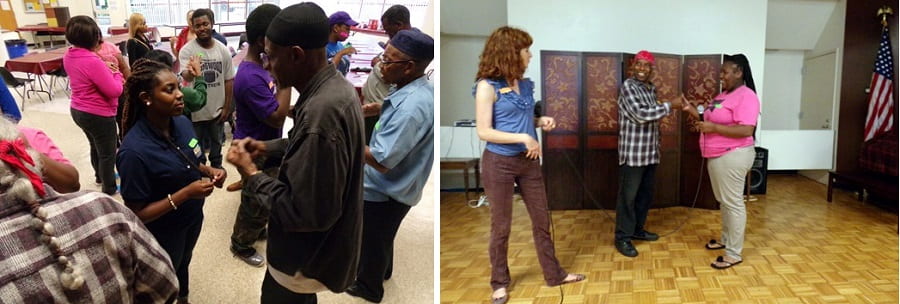
After sharing a little bit about ourselves with one another, our older adult participants gave the group a tour of the Atlas Senior Center and discussed with us the role of the Senior Center in the lives of its members and the community. Insightful young adults noted that the Senior Center fills a role for older adults in similar ways that the South Side Help Center feeds their spirits, minds, and bodies. One older adult participant noted, “the Atlas Center keeps me alive. I retired a year ago, and you cannot just sit at home. So, I come here.” This parallel between the work of both “Centers” was one that I had not drawn but is so obvious and important.

Upon returning to our large room at the Atlas Center, we discussed the goals, objectives, and anticipated outcomes of the Generations of Us project. Everyone is already putting our presentation date of August 21 on his or her calendar!
Creating additional opportunities for intergenerational dialogue, we divided into small groups of 2-5 participants to do a Past and Present Brainstorming activity. Groups were asked to brainstorm things from the past (older than 20 years) and the present (younger than 20 years) based on certain categories. Some of those categories were: popular movies, popular music, famous athletes, presidents, etc.

Lots of debate and laughter arose out of these brainstorming sessions. One young adult remarked, “why is everything a remake?,” while another responded “I can’t believe you MADE your own toys.” An older adult responded to a young adult’s choice for the popular music category by explaining, “the Jackson 5 are not new. They have been around for over 50 years. My daughter is 52, and I listened to them when I was pregnant!”
We wrapped up our second day by returning to the topic of Interviewing skills with the “Question Game.” Sitting in a big circle, the group was challenged to ask me questions. If the question was the “right type of question,” the group would get a point. If it was the “wrong type of question,” I would receive a point. The object of this game is to illustrate the types of questions that are open-ended and elicit a story. The group beat me and another young adult participant very quickly by catching onto the idea of open-ended questions in the first few minutes. The questions posed by participants impressed me, and I am excited to proceed to the next stages of preparing and exchanging in the oral history interview process!
Wednesday, August 13 & Thursday, August 14
Wednesday’s Agenda:
1. Icebreaker: “Did you ever…?” Speed dating style!
2. Revisiting the question game with Baba Griot’s poetry
3. Autobiographical Sketch Exercise
4. Practice Interview 1
On the third day, our Interviewers-in-training arrived at the Atlas Center with a few more friends in tow. All were ready to get started, and we began our Wednesday afternoon with a “Did you ever…?” icebreaker. Young and older adult participants sat across from one another and told stories based on slips of paper that asked “Did you ever have a pet?” or “Did you ever make something that you were really proud of?” With a total of 22 people participating, the laughter and memories were flowing all around our long table.

After exercising our minds and memories, we shirted our focus back to the Question Game from yesterday. Baba Griot volunteered to bring in his poetry and share his experiences as a published author. Insightful, open-ended questions were posed by everyone around the circle, and we even had the opportunity to watch Baba Griot perform his poem, “John Coltrane.” You can read more of Baba Griot’s poetry on the Atlas Senior Center’s website here.

As a group, we discussed why certain questions “won” a point and others did not. Our Interviewers, still in training but coming along quickly, described ideal questions to ask as open-ended, asking for more detail, and asking for examples. I followed up their astute observations by discussing the three levels of inquiry, role of follow-up questions, and the idea that questions should lead to stories and not just answers
To delve further into our own personal histories, everyone wrote a brief autobiographical sketch of no more than a paragraph.

Next, young and older adult partners practiced interviewing one another for 10 minutes each. This exercise was meant to introduce the interviewing format, and I could tell that pairs were doing more exchanging than interviewing. Tomorrow, we will focus on the difference between an exchange and an oral history interview and will ask the Interviewers to push themselves in this new skillset.

Thursday’s Agenda:
1. Opening Activity: Word Puzzles and Knot Ties
2. Interview Preparation Discussion
3. Practice Interview #2 with Audio Recorders
4. Debrief Interviews
5. Closing: StoryCorps Podcast and Preview of Next Week’s Agenda!
Prior to meeting with the participants in Generations of Us, I visited the StoryCorps booth at the Chicago Cultural Center downtown to pick up a StoryKit. I contacted the StoryCorps Chicago booth in July to see if there was any potential for collaboration, especially in preserving the stories captured during this project. I was incredibly excited to speak with Shirley Alfaro of StoryCorps, who suggested that I borrow a StoryKit, which contains a portable audio recorder and microphone, and which allows stories to be recorded with greater quality and be preserved in the Library of Congress. Interviewers and narrators can even give StoryCorps permission to produce and possibly air their stories on local or national radio! I have listened to the StoryCorps podcasts for many years—I especially love the animations online—and am very energized that I can incorporate this resource into Generations of Us. For more on StoryCorps in Chicago, visit http://storycorps.org/chicago/.
This is the StoryKit:
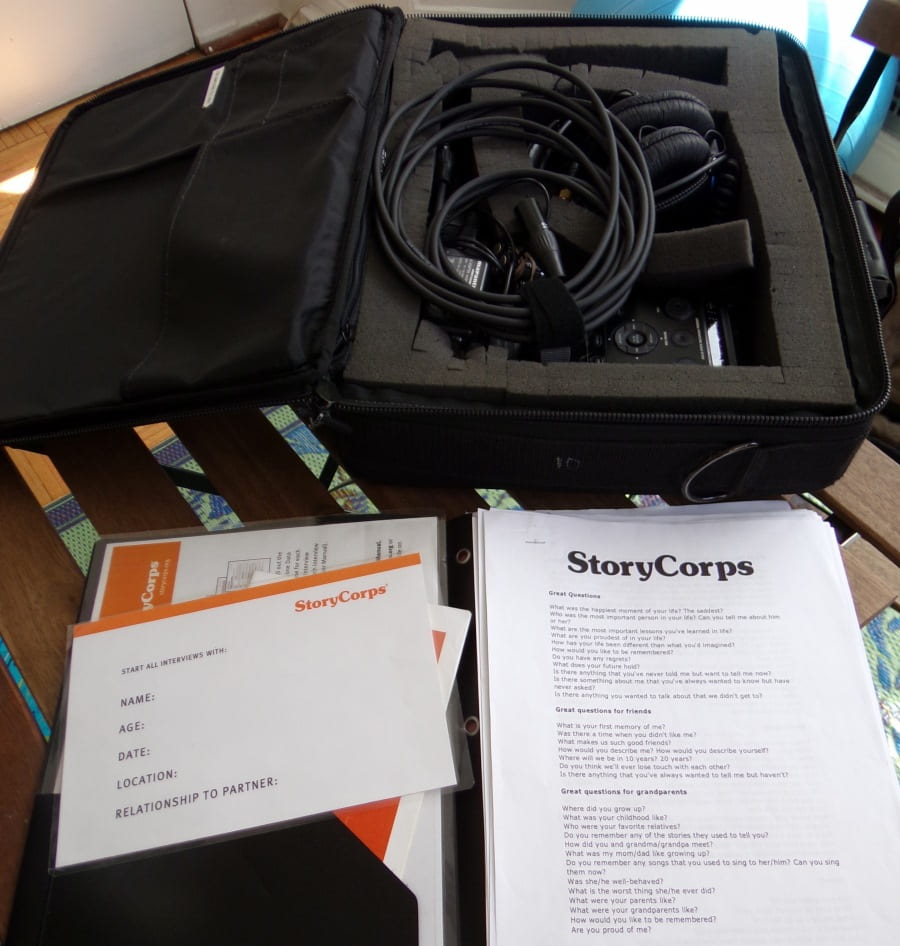
Our agenda today focused on doing final preparations before we record final interviews next week. We reviewed several portions of the Oral History Guide that I created and discussed important tips, like gather basic biographical information about your interviewee first, do background research, set personal and project goals, and practice your questions. The young adults from the South Side Help Center were relieved to hear that oral history interviews are relaxed and flexible so that stories and experiences can be told naturally. We also discussed the nature of historical preservation and the difference between primary and secondary sources. I emphasized that they are creating primary source materials that can be used by historians now and in the future. I observed that both young and older adults were excited to play a role in creating history and not just reading a textbook! Sitting in a circle, I posed a potential focus for an oral history interview: the 1968 Chicago riots. From there, the older and young adults discussed race, violence, and the police, drawing parallels between the past and present state of racial and community violence in Chicago. Afterwards, a young adult approached me and said, “can we do that again?” I responded, “Yes, and you can record that conversation!”
After our snack break, we broke into groups to practice interviews with the audio recorders. I gave a brief lesson on how to use our handheld Sony audio recorders and let them run with it! Here are some pictures of the practice interviews from today:

To close up the week, I decided to share a StoryCorps podcast episode that aired in early July 2014, where a father and son discuss their experiences as firefighters in Chicago. You can listen to that episode here. Again sitting in a circle, I told the group how they will have the opportunity to record their stories and possibly give them to StoryCorps. Most had not heard of StoryCorps, but after hearing the podcast episode, everyone clapped, and I think they will now be fans.
Though it was 4:03pm, and the young adults bus was waiting for them in the parking lot, one young adult was raising her hand to speak. I called on her, and she said so eloquently, “I am just so excited for this because we can actually learn about history by connecting to someone who was there. It is so much more real!” This was the perfect way to end week one and validated the entire premise of intergenerational work and oral history—as well as all of the hard work that everyone has done to make this project possible!
Monday, August 18 & Tuesday, August 19
Monday’s Agenda:
1. Opening Activity: 3 Elements Creative Writing
2. Debrief and feedback from practice interviews
3. Conduct Interviews
4. Closing: hand out t-shirts!
In the second week of Generations of Us, the young and older adult participants jumped right into recording their conversations. While I was preparing the curriculum, I had originally envisioned the young people interviewing the Seniors, but as the project evolved the group drifted towards recording intergenerational dialogues based on the oral history interview questions. I have encouraged the recordings to take place between 2-4 people so that the conversation can reach a certain depth that does not occur with a large group in a short amount of time. I am impressed by the conviction of the participants and their eagerness to share and listen to each other’s stories.
Today, we began with a creative writing exercise to get the storytelling juices flowing and then broke into four small groups for recording. I gave some feedback to the group after listening to their practice interviews. This feedback included not chewing or unwrapping food during the interview, passing the microphone around to each speaker, and spreading out in the room to avoid recording others’ conversations. In total, we recorded four conversations today. The topics of those conversations included pain, growing up, changes over time, and Chicago history.

Tuesday’s Agenda:
1. Opening Activity: Myths and Facts
2. Conduct Interviews
3. Closing: Presentation preparation and more t-shirts!
On Tuesday, I decided to begin the day with another intergenerational-themed activity, similar to those of the first week. I passed out bowl with slips of paper that listed myths about young and old people. The group responded really well to this activity, and enjoyed debating the impacts that some of the myths about their age brackets have on their lives. Here are examples of two myths, what do you think?
Myth
Most teenagers are lazy and don’t want to help their communities.
Fact
Six out of ten young people already volunteer with community agencies. Almost nine out of ten teenagers would volunteer to take part in programs to help prevent crime if they knew how to get involved with their communities
Myth
Older people need looking after.
Fact:
Contrary to popular stereotypes, most seniors older adults live in their own homes and enjoy a measure of independence. Many older adults compensate for these down-sides of the aging process through hobbies, travel, volunteer activities, and meaningful relationships with family and friends. Only about 5% of people 65+ actually live in nursing homes.
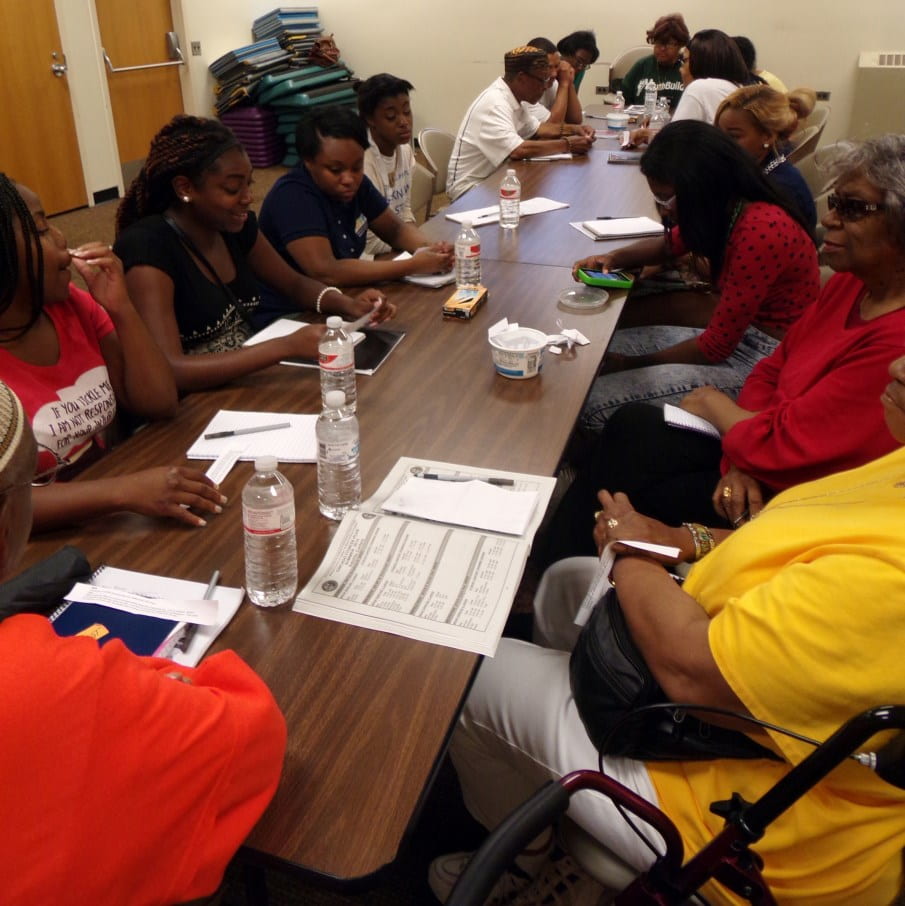
KODAK Digital Still Camera
After we finished our opening activity, we divided into 6 groups of 2-3 people and conducted more interviews. I am impressed by the leadership of the older adults who support and encourage the young people who are less eager to conduct an interview. I can see that the hesitant or excited young people gain confidence as they approach, begin, conduct, and complete an interview. They have begun to cultivate relationships and with those of a different generation and yet have learned a lot about the universality of the human experience. Many of the participants takeaways from the interviews include their surprise at the number of similar experiences that young and old people have had and continue to have as well as an awe of the longevity and full lives of our older adult participants. I can’t wait to share the interviews during our presentation and to hear the young and old people reflect on their experiences at the Atlas Senior Center!

Wednesday, August 20
Wednesday’s Agenda:
1. Opening Activity: Petit Art Gallery Presentation
2. Reflection
3. Presentation Preparation
4. Poster making
On our second to last day of Generations of Us, our group of young and older people was smaller and more intimate. We focused on the last two steps of the oral history process: present and evaluate. We began by learning about art through a mini-presentation by one of our Senior participants, who is active in the art classes and group at the Atlas Senior Center and in the greater Chicago art world. The young people had a chance to ask her questions and to learn about the many mediums of creative expression that one can learn and explore throughout one’s lifetime. Our Senior artist passionately described her own work, the work of her children and friends, and shared her hope that we would all be inspired to create our own art!

Next, I presented the young and older adults with a series of questions to reflect on their experiences during the project. Here is a list of those questions:
Generations of Us: Final Reflection Guided Questions:
1. What were your preconceptions about relating to older or younger adults before this project?
2. What were your preconceptions about the interviewee’s age before this project?
3. How has this experience changed (or not) your views?
4. What was the most valuable information you personally gained during this project?
5. How do you think you affected your interviewee?
6. What do you think are the most positive aspects of this project?
7. What do you think can make this process even better for both students and older adults?
8. What are other important thoughts or feelings would you like to share about your participation in this project?
After silently reflecting and writing in our reporters’ journals, some participants shared their thoughts with the larger group. Many of those thoughts will be shared during our presentation, so I will wait until the presentation happens tomorrow to reflect on their takeaways!
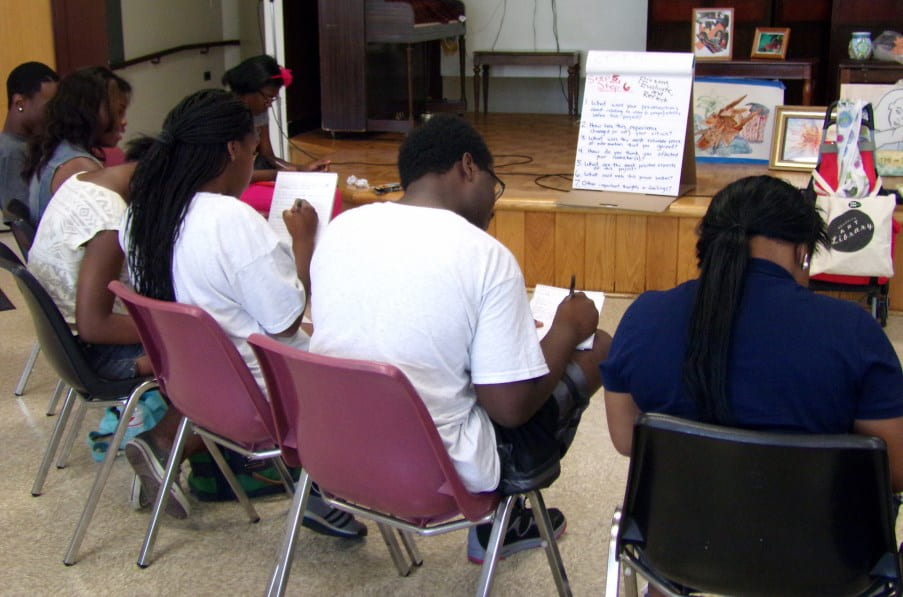
KODAK Digital Still Camera
Finally, we planned the agenda for our presentation celebration! The young and older people are excited to making it an engaging presentation with different activities and lots of fun. I am excited to share what the students have prepared for everyone on Thursday afternoon (including their awesome posters)!
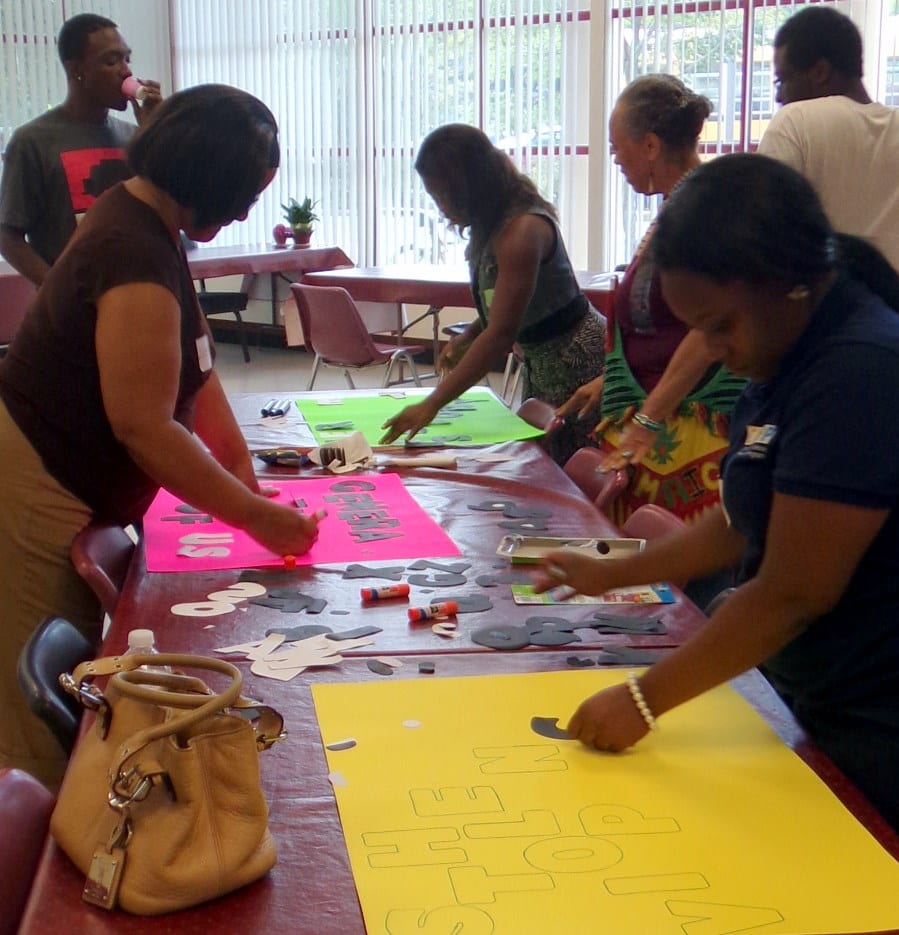
KODAK Digital Still Camera
August 21, 2014
Today was the final day that Generations of Us would meet, and we gathered to celebrate the sharing and bridge building that went on over the last two weeks. Our celebration took place at the Atlas Senior Center, and it was open to the public, but most people in attendance were participants in the project.
We listened to clips from the 10 different 40 minute long interviews to highlight just a few of the stories and experiences that were shared.
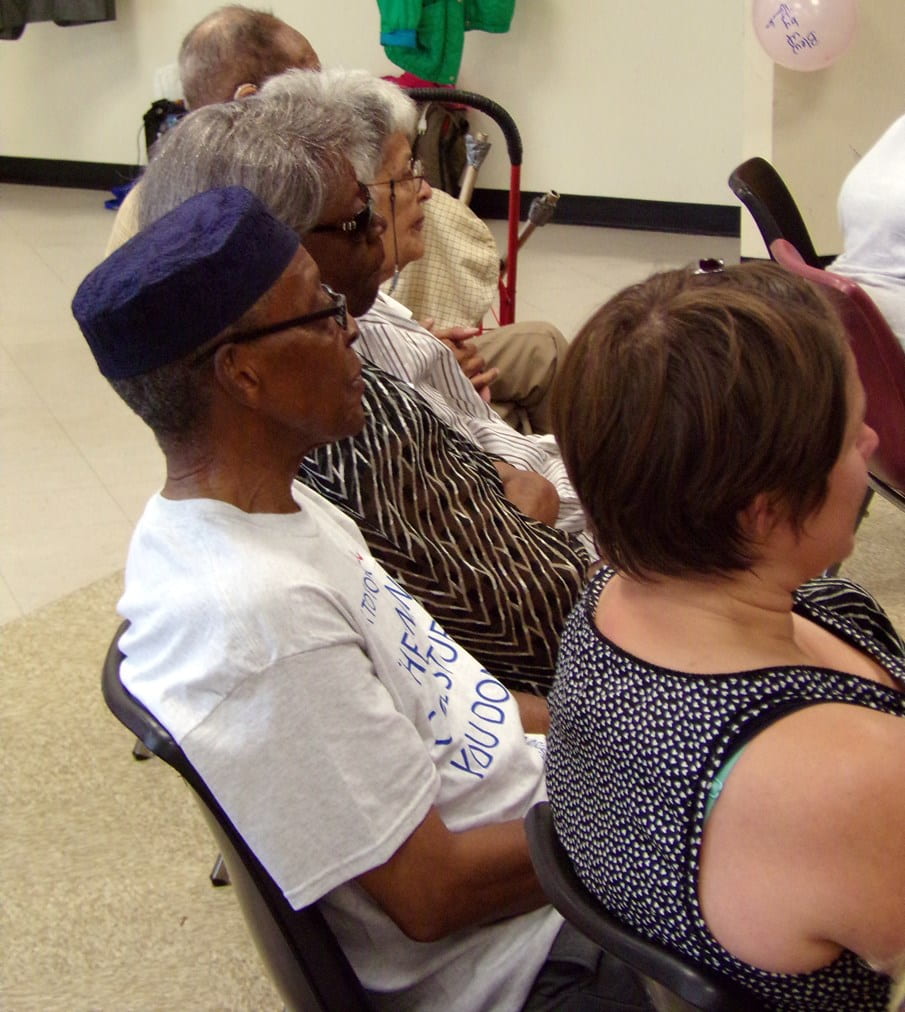
KODAK Digital Still Camera
Most participants were wearing their “Talk to young/old People, they know cool stuff you don’t” t-shirts, and a few of our young and older people shared their reflections on the program. I think that the pictures show the passion and authenticity with which experiences were shared and here are just a few:

We then played a few rounds of BINGO with t-shirts as prizes.

We ended the presentation and celebration with food and social fun, and I shared a quote that inspired me as a facilitator throughout the project, “When the old are not allowed to tell their story, the young grow up without history. If the young are not listened to, we have no future.” –Dr. Gunhild O. Hagostad
These ideas that building relationships with people across the age spectrum is worthwhile and having a space for intergenerational dialogue creates meaning are what we need to help to promote peace within ourselves and our communities. The power of the story is real, and we saw that with Generations of Us on the south side of Chicago.

I would also like to take this last opportunity to thank all of the people and organizations that made Generations of Us possible, including the Kathryn W. Davis Projects for Peace, the International House at the University of Chicago, the Atlas Senior Center, and the South Side Help Center. It has been an honor to be able to plan, implement, and manage this project, and I want to mention a few individuals who gave enormous amount to support me and this project:
• Laura Rosenberg of I-House for encouraging me to apply for the grant and for helping with all of the administrative tasks
• Marcus Flenaugh and Mr. P of the South Side Help Center for seeing the vision and helping to make it happen each day
• Robyn Tillotson of the Atlas Senior Center for hosting the project and supporting its evolution
• Jeffrey Solotoroff of the UCM South Shore Senior Health Clinic for being a mentor and helping me to edit the grant and the curriculum
• My I-House gang of friends—Lauren, Courtney, and Shuana—for the broccoli
• My family for always being there
• And most of all to the participants—young and old—for bringing their passion, energy, and dedication to the project each day. What a group! Talk to us, we know cool stuff that you don’t!
